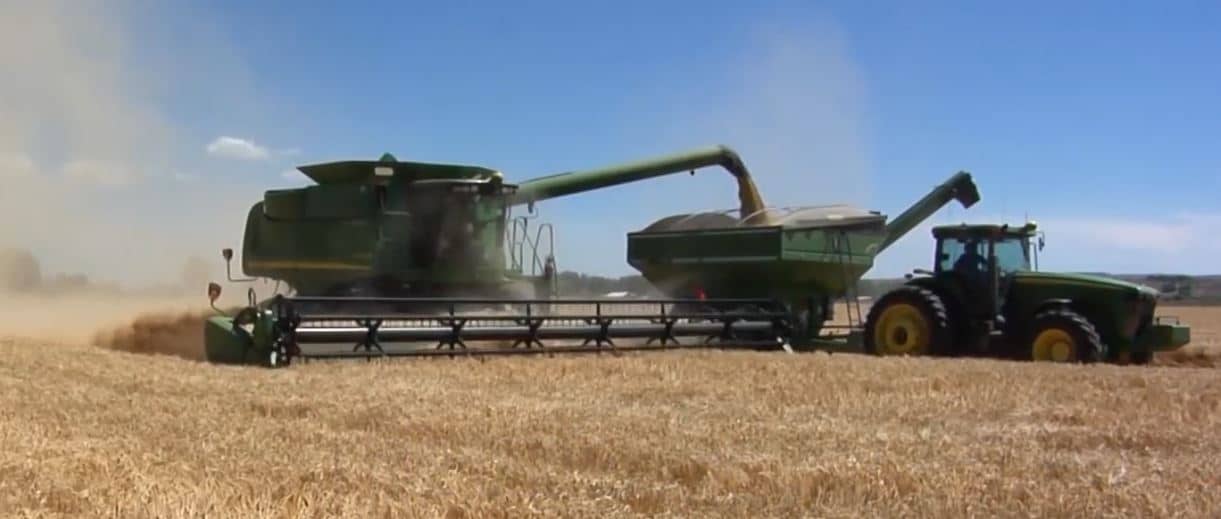The 2022 Wheat and Barley Variety Survey report has recently been released. Funded by the Montana Wheat and Barley Committee (MWBC), these reports were conducted by the National Agricultural Statistics Service (NASS) Mountain Regional Office. This information is used to help guide breeding programs in selecting varieties that will ultimately increase farm profitability and end-use marketability of Montana-grown crops.
“The varietal survey provides MSU wheat and barley breeding programs with valuable producer feedback that can be utilized to develop cultivars that will continue to drive international markets toward Montana,” said Sam Anderson Market Development Director of the Montana Wheat & Barley Committee.
Producers participating in the survey ranked Warhorse as the top winter wheat variety, Vida as the top spring wheat variety, Alzada as the top durum wheat variety, and AC Metcalfe as the top malting barley variety. Click Here to view the MT Wheat Varieties Report. Click Here to view the MT Barley Varieties Report.
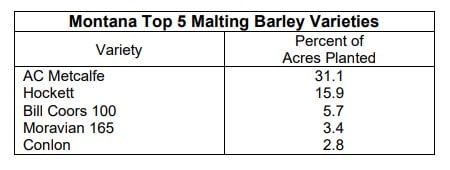
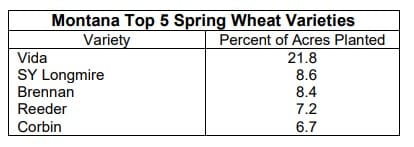


Trait index survey results indicate traits that farmers are considering when deciding which variety to select. In addition to yield and protein, farmers are looking for drought tolerance, sawfly resistance, high test weight and early maturing traits. Montana growers experiencing extreme drought conditions view varietal selection decisions as vital to the farm’s success.
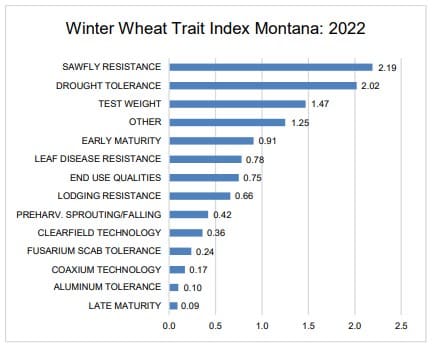
Growers of both barley and wheat were asked about their expectations concerning the profitability of their operation over the next twelve months. Farmers who reported the profitability of their operation would be better off was 17.6 percent. This compares to 20.4 percent last year. No change in profitability of their operation was expected by 40.0 percent of famers, compared to 54.5 percent last year. Farmers who expected their operation would decline stood at 42.5 percent. Last year farmers who expected their profitability would decline stood at 25.1 percent. Some farmers indicated drought, pests, and market conditions affected their answers.
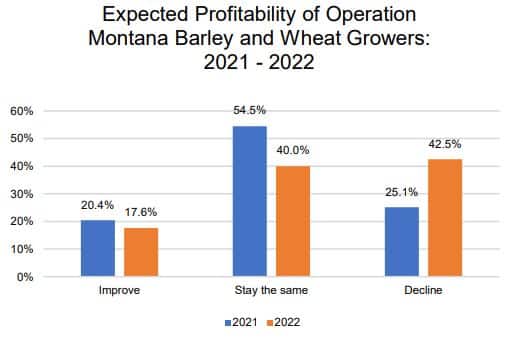
Growers of both barley and wheat were asked about the financial status of their operation compared to the previous year. Farmers who reported their operation was better off stood at 14.0 percent, compared to 17.3 percent last year. Farmers who reported their operation was about the same came to 50.5 percent, compared to 63.7 percent last year. Those who said their operation was worse off financially stood at 35.6 percent. Last year, 19.0 percent said their operation was worse off financially than in the previous year.
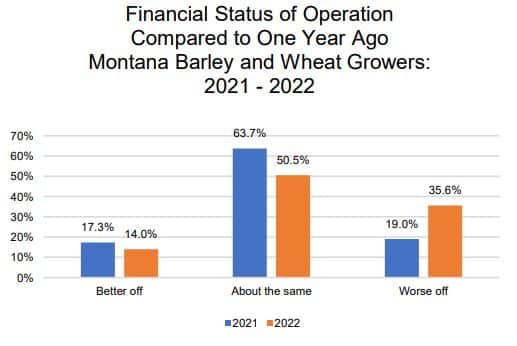
Farmers were asked if they had transitioned land coming out of the Conservation Reserve Program into certified organic production at any time. Farmers answering yes to transitioning land out of CRP to certified organic stood at 3.5 percent. The
remainder, 96.5 percent, had not transitioned any land to certified organic production.
Farmers who answered yes to transitioning acres from the Conservation Reserve Program to certified organic were then asked to report the number of acres they had transitioned. The total number of acres transitioned to organic among wheat and barley growers in Montana is estimated to be about 72,000 acres. This is only an estimate of land transitioned among wheat and barley growers in Montana, and is not representative of all farmers and ranchers in Montana.
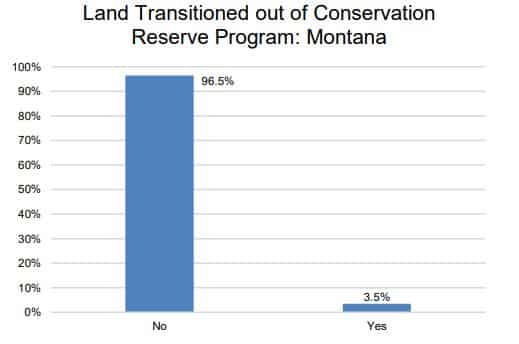
As farmers wrap up harvest this year, the Wheat and Barley Committee and Montana Department of Agriculture encourage all producers to reach out to extension agents, agronomists, and seed dealers to discuss available options for growing the highest quality grain possible.
###
MT Wheat and Barley Committee/NASS

